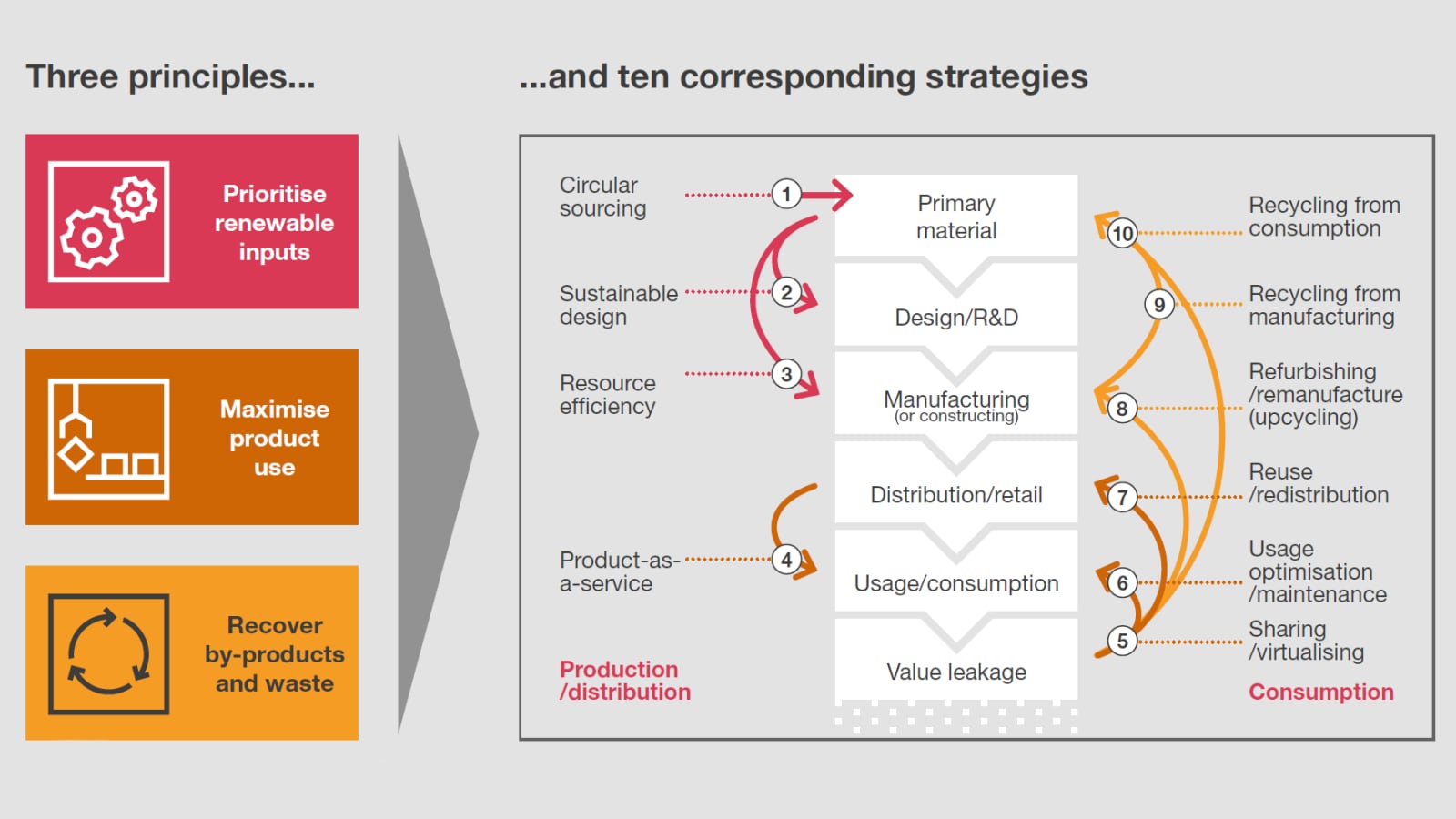
Deciding on your circularity journey
Companies in the energy, utilities and resources sectors have the potential to play a huge role in the development of a circular economy. Many of the technological developments that could accelerate circularity are within their sphere of operations. These include innovations in materials composition and efficiency, electrification, hydrogen production, biochemistry and synthetic chemistry, and carbon capture and use.
Pressing the reset button
Five urgent global issues are fundamentally changing the way millions of people live and work: asymmetry, disruption, age, polarisation and trust (our ADAPT framework). The global pandemic has now accelerated the need for change, and circularity offers a way of pressing the reset button to address many of the challenges.
- Disruption: circularity addresses the disruptive threat of climate change and pressure on resources by developing a more sustainable economic model.
- Asymmetry and polarisation: as communities and nations fracture, circularity emphasises interdependence and mutual benefit.
- Trust: as trust in institutions erodes, circularity offers an opportunity to develop more transparent supply chains and demonstrate environmentally and socially responsible practices.


From a linear economy to a circular one
Climate concerns have already been placing pressure on traditional ‘take, make, dispose’ economic and business models. In contrast to these linear approaches, circularity decouples economic activity from the consumption of materials and energy by creating closed-loop cycles in which waste is minimised or even eliminated, and in which resources, including carbon, are reused. Even companies with business models that are inherently linear, such as oil and gas or mining, can introduce elements of circularity into their operations. And so, we look at what circularity can offer to companies across the energy, utilities and resources sectors.
Circularity principles and strategies
Circularity can be centred on three overarching principles (prioritise renewable inputs, maximise product use, recover by-products and waste), which define ten corresponding strategies. The diagram illustrates the continual flow of resources in both the production/distribution phase and the consumption phase.

From resource drain to resource gain
Across the board, companies in the energy, utilities and resources sectors are examining their use of resources with a fresh eye and striving to derisk business models. Circularity provides a useful lens to consider strategic options, ensuring that resources are used with more care and, wherever possible, treated as assets that have cradle-to-cradle value.
Six steps companies can take to embrace circularity

Map your circular opportunities.
Examine where your current operational footprint and direction are taking you. Assess your opportunities to deliver circularity, looking deep inside your operations and outside to the surrounding community of suppliers, customers and stakeholders.

Be clear about your strategy and vision.
Set out your circularity ambition and give it the necessary strategic underpinning, ensuring that it is widely communicated and understood by those who have to deliver it.

Plan your circular transformation route.
For some companies, it may be small steps. For others, it will require the transformation of their whole business model. Either way, identify the company-specific capabilities that will enable your circular transition.

Develop circular collaborations and frameworks.
Forge the relationships and alliances that you will need to develop an effective circular ecosystem. Circular ecosystems need to be part of a supportive framework within well-functioning markets and have clear rules, a dedicated infrastructure and a logistical network.

Measure, review and communicate your progress towards circularity.
Monitor your circularity steps with adequate management and reporting processes, and use those processes to further refine your circular strategy.

Move before your competitors, customers and regulators do.
It’s better to facilitate your own circular transformation, rather than let others overtake you and find yourself playing catch-up.







